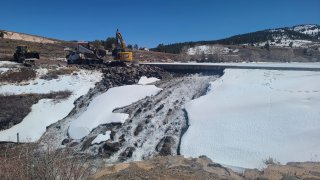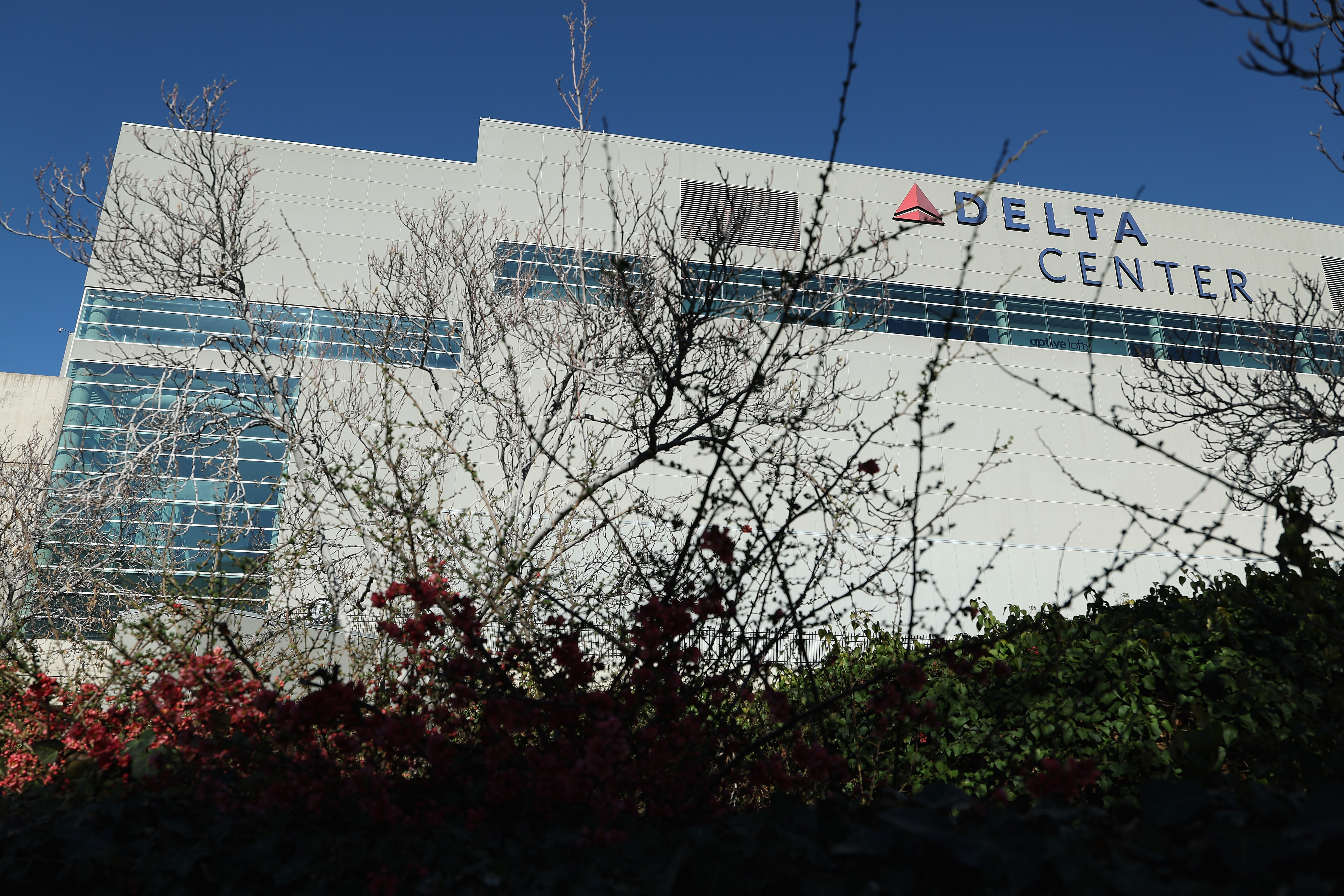
Workers hurriedly tried to shore up a rural Utah dam after a 60-foot crack opened and sent water pouring into a creek and endangering the 1,700 residents of a downstream town.
State and local officials don’t think the Panguitch Lake Dam is in imminent danger of breaking open but have told the residents to be prepared to evacuate if conditions worsen. Lowering the reservoir to below the affected area will take several days, said Everett Taylor, an assistant state engineer for dam safety with the Utah Division of Water Rights.
About 2 feet (61 centimeters) of water remained above the crack as of Wednesday evening and they had covered nearly 45 feet (nearly 14-meters) of the crack with boulders, he said.
An ice sheet on the reservoir was pushing up against the dam, causing the top to crack and tilt downstream, with water gushing through the opening, Taylor said. The ice sheet has now pulled away from the dam and the top of the dam has tilted back, he said.
Feeling out of the loop? We'll catch you up on the Chicago news you need to know. Sign up for the weekly Chicago Catch-Up newsletter here.
“We have made cuts across that ice sheet so we can relieve the pressure against the dam,” Taylor said.
Utah News
A community meeting was scheduled for Wednesday to update and answer questions from residents in Panguitch, a town of about 1,800 people that is about 10 miles (16 kilometers) downstream from the dam. Another tiny town, Circleville, is farther downstream and faces a lower risk.
Local officials discovered the crack in the upper portion of the dam during an inspection Monday night and Utah state officials announced it to the public on Tuesday.
Water is being released at nearly 260 cubic feet (6.5 cubic meters) per second to draw down the reservoir below the crack, and large rocks are being trucked in and placed on the downstream side of the dam to support the wall. No rain is forecast until Saturday.
The dam was built in the late 1800s, but the the top portion that cracked was added to the top of the dam in the 1930s and 1940s. There were no previous concerns regarding the dam’s structural integrity, Taylor said.
“No one anticipated this,” he said, adding he is encouraged by the progress being made.
State officials called it a level 2 breach risk — a designation in the middle of the three-prong scale that means there is potential for dam failure.
“We are going to continue to focus on drawing the reservoir down, making sure the ice ... we keep that off of the dam, and to continue to buttress or support this downstream side,” Taylor said.
___
Peterson reported from Denver.
___
The Associated Press receives support from the Walton Family Foundation for coverage of water and environmental policy. The AP is solely responsible for all content. For all of AP’s environmental coverage, visit https://apnews.com/hub/climate-and-environment



